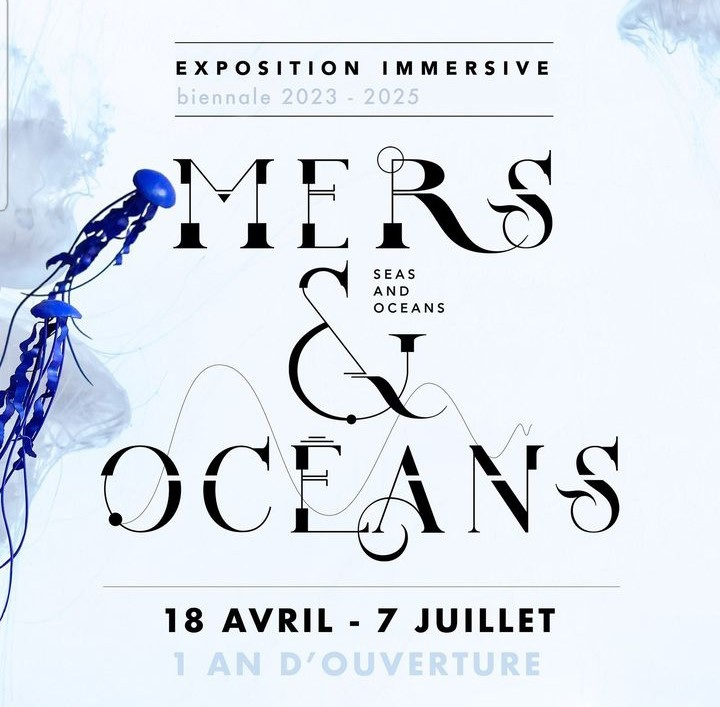FISHES DO NOT EXIST YET THEY SING IN MY DREAMS
Soundscape, Installed at TALK CEC (Bruxelles)
for “Mer&Ocean” Exhibition 2024
p
The soundscape you are listening is a composition made of the recorded sound of fish specimen. This lullaby on undisclosed sounds is meant to put us closer to our wrong pre- assumptions: fishes are everything but mute ((“mute as a fish”)), but also the term “fish”, scientifically speaking (as a taxonomy), is meaningless.
“Fish do not exist yet they sing in my dreams” is a sound wave travel in time: by retracing the
story of the noun “Fish”, to the sound of the “slow” Barramunda (Neoceratodus forsteri), the
living fossil fish that has not changed his physiognomy in 380 million years, now in the red list
of IUCN Threated Species.
As sound travels below the barriers of human-classification, terminology and time, this sonic
landscape immerse you in a chorus that is constantly happening, below our eyes and ears,
since before our appearance on planet Earth.
Transcription of Record:
“Fish” is an umbrella term for a mostly aquatic vertebrate that is not a mammal, bird, or anything else. Putting together these vertebrates belonging to different and not closely related groups would be like grouping together all flying vertebrates, such as birds, bats, some species of squirrels and so on, defining them in the same way simply because they fly. The degree of relatedness between a shark and a lamprey is no closer than that between a camel and a salamander.
We commonly call more than half of the species of vertebrate animals existing on Earth today "fish", and we do so because we identify relatively common characteristics between the various species: they seem so similar to us that they fall into the same large group. In our imagination a fish has a shape that is more or less always the same, narrow and elongated, with scales and fins for swimming in the water.
Most of the thousands of species of these animals have a well-defined skeleton, an easily distinguishable skull and jaws. They also have fins supported by jointed bony elements ("rays") and for this reason they are called "ray-finned fish" or actinopterygians, from the ancient Greek πτέρυξ (wing, fin) and from actino-, meaning equipped with rays.
In the long history of evolution, these animals have undergone important modifications with clearly separate histories, such that they cannot all be classified with the same definition as "fish". To get a better idea, you need to go back in time about 500 million years, when these animals began to populate the large bodies of water on Earth. They were the first to develop a backbone and a skull, a process that took a long time, if compared for example to the existence of our species which dates back only a hundred thousand years ago.
Even today there are some species that remind us in a certain sense of where we come from. The barramunda (Neoceratodus forsteri) is typical of an area of Queensland in Australia and is defined as a "living fossil", because its appearance and characteristics have not changed for at least 380 million years. This means that even today we can observe what a species looked like which in his case contributed to the appearance of amphibians.
Specimen Sounds:
Alectis ciliaris (African pompano);
Albula Vulpes ;
Alosa pseudoharengus (Alewife)
Sound Names: Cough; Mouthbubble; Snitch
Fish and Mowbray (1970)
Kaschner (2012)
Amphichthys cryptocentrus (Bocon toadfish)
Sound Names: Boop; Grunt; Swoop
Notes: See Fig. 2 in Staaterman et al. (2018)
Anguilla rostrata
(American eel)
Sound Names: Click; Cluck; Squeak
Fish and Mowbray (1970)
Kaschner (2012)
Anoplopoma fimbria (Sablefish)
Sound Names: Rasp; Tick
Notes: See Fig. 2 in Riera et al. (2020)
(Neoceratodus forsteri), IUCN Red List of Threatened Species, Versione 2020.2
Anoplopoma fimbria (Sablefish)
Sound Names: Rasp; Tick
Notes: See Fig. 2 in Riera et al. (2020)
Aplodinotus grunniens
(Freshwater drum)
Sound Names: Chorus; Drum Chorus
Rountree and Juanes (2017)
Aplodinotus grunniens (Freshwater drum)
Sound Name: Drum
Notes: Example of an isolated 2.2 s disturbance/agonistic call from Tivoli Bay on the Hudson River.
See Fig. 2c in Rountree & Juanes (2017).
Argyrosomus japonicus
(Japanese meagre)
Sound Name: Unnamed
Parsons et al. (2013)

SOURCES:
FishBase Research Repository
“Fish”, not-existing Taxonomy, Encyclopaedia Britannica
I pesci non esistono, Lulu Miller,2020,Add Editore